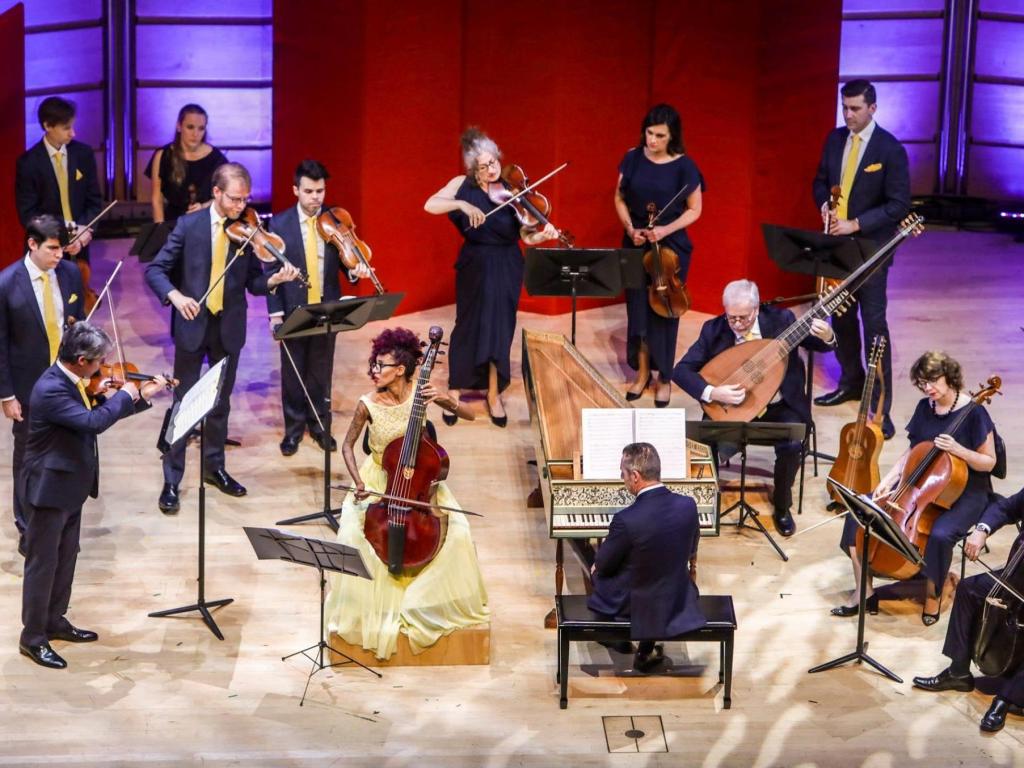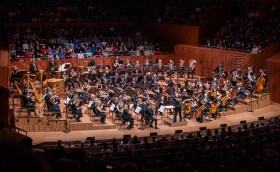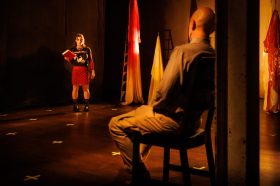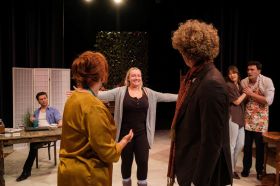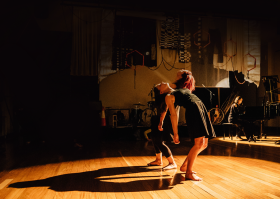Australian Brandenburg Orchestra’s Lixsania and the Labyrinth. Supplied.
The viola da gamba, a mainstay of Baroque music, is generally considered a refined, delicate instrument. But the buoyant, joyous vigour of Australian Brandenburg Orchestra’s production, Lixsania and the Labyrinth, takes the pre-industrial instrument on an altogether different route.
The program headlined Vivaldi, Graun and Duchiffre – harnessing the now familiar breadth of Australian Brandenburg Orchestra’s range. Headliner on viola da gamba, Lixsania Fernandez’s solo opened the program, drawing together Corelli, Marais, Scarlatti and Vivaldi. Sharing the headline, Shaun Lee-Chen, Brandenburg’s Concertmaster, performed Locatelli’s violin concerto, Il laberinto armonica, from which the production loosely borrowed its title. (Locatelli had written on the score ‘the harmonic labyrinth: easy to get into, difficult to get out of.’) Lee-Chen performs with extraordinary physicality. As the orchestra drops out, Chen’s rapid-fire solo – a crazy breakneck wave of notes in the Capriccios – reaches vertiginous limits of the baroque violin’s range. Lee-Chen’s furious physicality spent – only to wipe his brow at its rapid, heady end.
But nothing is inconsequential in Artistic Director and Conductor, Paul Dyer’s programming. Paired with Renato Antonio Duchiffre’s Concerto for Two Violas Da Gamba in D Minor (2001) – a swelling, energetic tango that set the room afire – the production set any received Baroque expectations against a more adventurous, vigourous journey – redoubled by the more than enviable charisma of featured viola da gambist, Cuban-born Lixsania Fernandez.
The production was made all the more powerful by Fernandez’s virtuosic playing. Yet, Fernandez’s onstage presence is as composed as her finely-grained instrument as it is theatrical. Her costume changes – Dior-like gowns, whose beyond-floor length diaphanous skirts transformed into a delicate bed for viola da gamba (‘da gamba’ translating to ‘on the leg’) – also cued the minimal set design. Fernandez’s luxuriant pink-tipped curls carried through into silk screens from which Brandenburg performers emerge, representing a kind of sonic liberation at the heart of the performance.
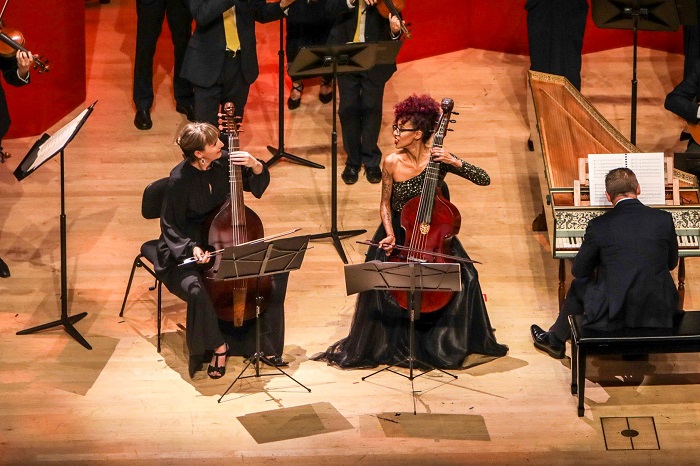
Australian Brandenburg Orchestra’s Lixsania and the Labyrinth. Supplied.
Shifting emotional register, improvisations by violin soloists, Matt Bruce and Ben Dollamn, bridged Vivaldi’s brooding, church-enthused Al Santo Sepolcro to the stirrings of Duchiffre’s contemporary Tempo di Tango, from his Concerto. Here, Fernandez was joined onstage by Brandenburg’s gambist, Anthea Cottee, to perform the blockbuster of the night, drawing out the rhythmic percussion of the heady yet powerful Tango to round out the program.
But before Fernandez took centre-stage to open the concert’s second half (in a stunning, lemon chiffon gown), Dyer casually took the microphone – ostensibly to announce the Australian premiere of Johann Gottlieb Graun’s Concerto for Viola da Gamba in G Major, a debut several hundred years in the making. (This, in itself, a showcase of Ferendez’s virtuoso technique, as Dyer reminds the audience, ‘music written for the instrument commands attention.’) Yet, Dyer’s story-telling flowed to Fernandez herself. As raconteur, Dyer wove a narrative-like enchantment around Fernandez’s on stage presence. Of poor Cuban origins, when her parents were unable to fulfill her desire for an instrument, ‘She asked a fisherman for some wire and strung a cardboard box so she could start to play.’ From this, her composed elegance and virtuoso playing suddenly took on an ethereal valence; a music formed from within. This transported effortlessly into the concert’s coda: where Fernandez sang a Cuban lullaby, a song, she tells the audience, she had sung to her son. Rhythmically plucking a viola da gamba resting chair-height, her powerful, melodic voice was a superb invitation to Cottee’s accompaniment in perfect unison. Here the initial rollicking vibrancy of the production, piqued by the Duchiffre’s Tango, fell away to reveal a real essence.
Lixsania and the Labyrinth blazes a maverick path, fusing baroque virtuosity with zealous lusty physicality of contemporary Tango, twisting expectations. Works that stretch from Vivaldi’s first published concerto, ‘L’Estro Armonico’ (1711) harnessing melody to rhythm, to the percussive, rhythmic tango composed for, what Dyer calls a ‘nasally sounding instrument’, the viola da gamba. This performance more than stems the more recent NY Times dismissal of the gut-stringed instrument as ‘passé’ (‘A Brief History of Failure,’ New York Times, Nov 12 2014).
Australian Brandenburg Orchestra’s offbeat choices don’t exasperate – they familiarise as much as de-familiarise audiences. The program, and headline performers alike, recaptures a freshness to the baroque idiom, resisting the staid and elitist stereotypes of classical performance – something future audiences could take a lead from.
4 ½ stars ★★★★☆
Lixsania and the Labyrinth
Artistic Director, Conductor: Paul Dyer AO
Viola da gamba: Lixsania Fernandez
Baroque violin: Shaun Lee-Chen
Viola da Gamba: Anthea Cottee
Australian Brandenburg Orchestra
10–11 November 2018
Melbourne Recital Centre, Southbank
